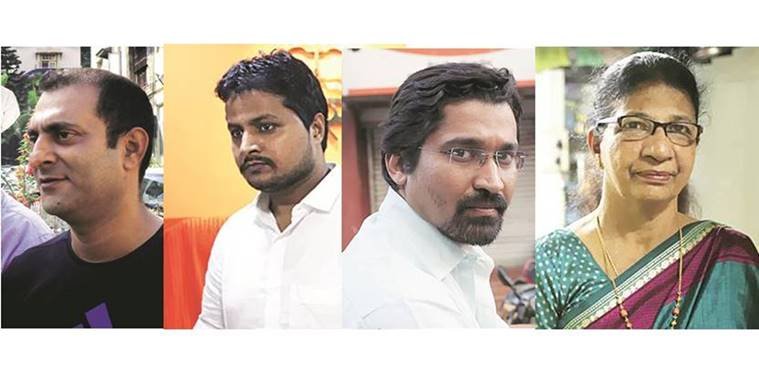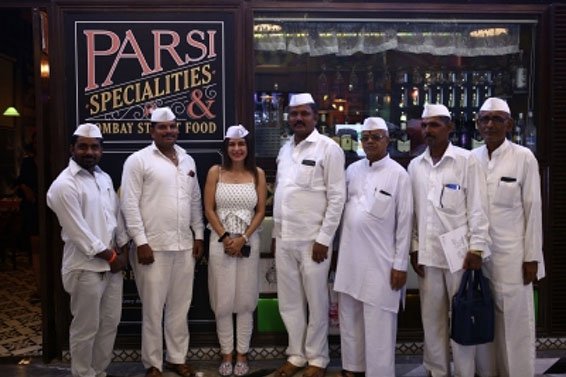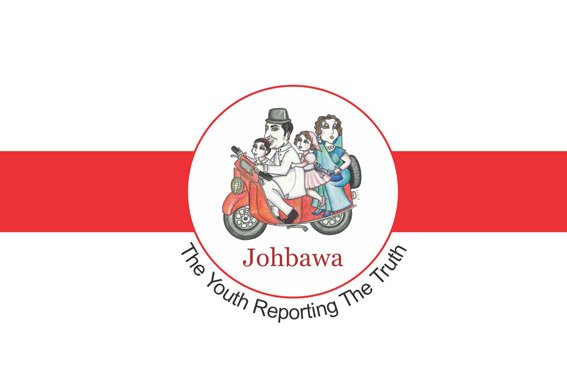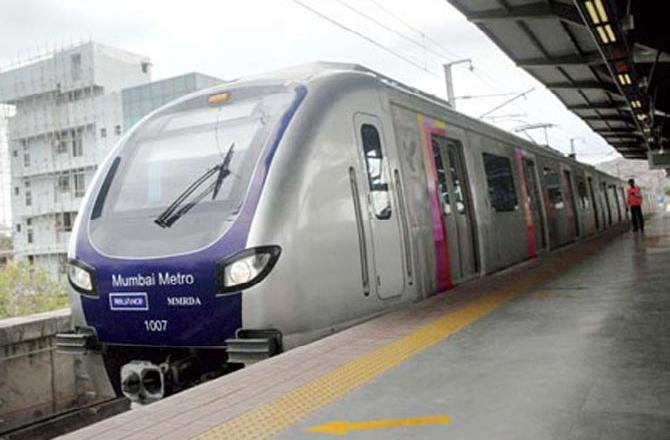The New Shiv Sainiks: Parsi, Muslim, Gujarati, Catholic
A slow evolution kicked off a few years ago has picked up pace as Shiv Sena adds nuance and variety to its former sons-of-the-soil agenda. This election, Sena foot soldiers are more cosmopolitan than ever before.
EVERY TIME somebody reacts with surprise when they meet this 39-year-old Shiv Sena deputy shakha pramukh of Ward Number 214, he answers precisely. “It is the most approachable party. The Shiv Sena is open to all communities, not just to Marathi people. It represents all communities and helps all communities. The only problem with the Sena is public perception,” says Khorram Siodia, a Parsi living in Khareghat Colony of Walkeshwar.
Siodia not the only Parsi Shiv Sainik in this upmarket and historical part of Mumbai, the party appeals to members of all ages in the community. Meiron Damania, 21, has been a ‘gat pramukh’ or organiser of about 1,200 voters on the electoral rolls, a post he has held in Shiv Sena for about a year now. “Sainiks are available for people at all hours. We see some political parties supervising road works and footpath repairs two months before elections, then abandoning these places later. That is never the case with the Sena,” says Meiron, a law student and teacher.
When the Brihanmumbai Municipal Corporation goes to polls early next year, a slow turning of wheels within the Shiv Sena, under way imperceptibly for the last five to seven years, will be in plain view. The party formed over 50 years ago on a narrow sons-of-the-soil agenda may continue its posturing and machismo on the ‘Marathi manoos’ plank, but the new Shiv Sainik in Mumbai is simply a young-to-middle-aged resident of the megapolis, belonging to any of the city’s multiple communities, wooed and nurtured by the party for his or her willingness to put in long hours of attending to local residents’ complaints and needs, capable of some hustling for support when required, and not concerned of the party’s ‘for-Maharashtrians-only’ tag.
Siodia was appointed deputy shakha pramukh last year, but has been active with the party for three years now. A private tutor who runs a transport business, Siodia says the Sena is a “non-communal and non-orthodox party”. Meiron says the party may propagate Hindutva but they are “not against any community”. “There is nothing wrong in taking pride in your religion,” he says. “When I tell people I’m supporting the Sena, they think something is wrong with me. It’s not me but they who need to open their eyes,” he says.
According to senior Shiv Sena leaders, after Darab Ghadiyali who was the first ever Parsi shakha pramukh (Fort area) in 1972, this is perhaps the first time that Parsis have been appointed as office-bearers.
That the Sena is reaching out to a new city with new demographics — Maharashtrians are now only a third of Mumbai’s voting population — the new voting behaviour is clear. The all-important shakha pramukh, one for each of the city’s 227 electoral wards and sometimes a position even more powerful than the elected corporator’s, is now an office open to more and more non-Marathi speaking people. The process to appoint more non-Maharashtrian shakha pramukhs began two years ago, and has picked up speed in recent months.
In Grant Road’s Arab Gully, a heavily Muslim-dominated area where even a saffron flag belonging to the Sena was considered impossible ever since the party was formed in 1966, the Shiv Sena has, for the very first time, a party office now.
Rashid Khan (, the Shiv Sainik who started the Arab Gully shakha three months ago, says, “People used to think that Sainiks would come and start collecting hafta or engage in hooliganism. They didn’t know about the party’s social work.” Khan says some activities over the past few months are slowly helping alter that perception. “A section of locals has started supporting me even though I still get threat calls asking me to shut the office down,” says Khan, who runs a steel and furniture business.
Sachin Kotian, a 31-year-old from Sewri, is an office-bearer of the Yuva Sena headed by Aaditya Thackeray. He belongs to Mangalore. Born and brought up in Mumbai, he speaks Marathi fluently but joined the Shiv Sena only after a personal brush with its accessibility. “In 2007, my mother was suffering from cancer. At KEM Hospital, I was struggling with the admission procedure one day when someone came up to me and said, ‘Bala, kaalji karu nakos. Mi aahe (Don’t worry son, I’m here).’ He came back in minutes with the formalities done, and I rushed off to get some tests done. When I came back looking for him and asked a security guard who the man was, I found out that was Mahadeo Deole, the (then) mayor of Mumbai.”
Impressed with a top leader’s humility and willingness to help when it mattered most, Kotian decided to work for the party. He joined the Sena in 2009, becoming more active when Aaditya launched the youth wing in 2010.
Ask Kotian how he, and his party, reconcile his support for the Sena despite its virulent protests against South Indians in the 1970s, and he says, “That was the past. I look at the present and the future.”
Like Kotian, a ticket aspirant from his ward, most cosmopolitan young Sainiks were not even born when the anti-South Indian mob fury unleashed by the Sena ran amuck. “We have 30 per cent each of Muslims, North Indians and Maharashtrians. The remaining 10 per cent include South Indians and Christians. We have representation from all at the shakha,” adds Kotian, who runs a printing business.
According to senior party leaders, the strength of non-Marathi-speaking shakha pramukhs that was less than 10 per cent of the total around five years ago is now up to nearly 40 per cent. In Muslim-dominated Shivaji Nagar-Mankhurd, the Sena now has committed party activists. Even in the Sena’s own bastion of central Mumbai, there are now South Indian and Gujarati office-bearers. For example, Ashwin Shah is a deputy vibhag pramukh in Dadar; Joseph Koli and T M Jagdish are shakha pramukhs in Mahim and Dharavi; and Muttu Tevar is a deputy vibhag pramukh in Dharavi, all appointed as office-bearers over the last five to seven years.
These leaders serve to send out a slightly nuanced message designed for the non-Maharashtrian voter.
Mohamed Ahmed Mulla, a deputy shakha pramukh in Sewri, says: “I have been associated with the Sena for the last three decades and have been deputy shakha pramukh for several years. It’s all about work. The Sena is not anti-Muslim, it is anti-Pakistani and anti-Bangladesh. I don’t think there is anything wrong in that.”
Another Sewri resident Christina Bhat, (64) a Goan and Catholic who was married to a Hindu Brahmin, has been deputy shakha pramukh for five years. “Today, when I read or hear about rape cases, I feel the city safer when Balasaheb was at the helm of affairs,” she says.
The wooing of the Gujaratis by the Shiv Sena has, of course, been well documented over the past couple of years — efforts that appeared to suddenly sharpen since the abrupt break in the alliance of the Sena and the BJP before the 2014 Assembly elections. “Following the 2014 Assembly elections, we started reaching out to all communities including Parsi, Gujarati, Muslims and others. We have given them posts at the shakha level and they have started working with us closely,” says Pandurang Sakpal, Sena Vibhag Pramukh in South Mumbai.
According to Sakpal, youth from all communities are attracted towards the Sena now. “Aaditya Thackeray is a youth icon. He has been able to attract youth from all communities,” he says.
Uday Rughani, Vikas Gupta and Lalsingh Rajpurohit, all non-Maharashtrians, were recently appointed shakha pramukhs in Charkop. In Ghatkopar, Bharat Shah was appointed coordinator for Ghatkopar (West) Assembly constituency while Nirav Gandhi was appointed gat pramukh. Rampal Pal, an Uttar Pradesh native, is now coordinator for Ghatkopar (East) Assembly segment. “Though Gujaratis conventionally vote for the BJP, they also have affection for the Sena. Gujaratis often come to shakhas with disputes that are resolved amicably. It clearly shows Gujaratis feel safe in the shakhas,” says Bharat Shah.
In many of these shakhas with large and committed voter-bases for other parties, winning may be impossible, but the party’s leadership believes that communities who the Sena has not reached out to so far should be tapped simply to create a presence, however small.
In the Sena’s affiliated groups such as its women’s wing and youth wing too, office-bearers from other communities are increasingly common — Agnes Fernandes in Amboli, Rachna Agarwal in Wadala, Nityanand Tripathi who is secretary of the youth wing, other office-bearers such as Narendra Saxena, Pradip Shetty, Dharmendra Dubey and more.
One Sena leader calls it the evolution of the party, keeping pace with the city’s evolution. “Like the cosmopolitan Mumbai, the Sena is also becoming more cosmopolitan, with the induction of all the communities into the party fold,” says the senior Sena leader.
However, many believe the party cannot really change its spots. “The Shiv Sena is a party that has never stood behind any community in the last 50 years. It has targeted all the communities right from South Indians to Muslims, North Indians and Gujaratis. Despite having a large Marathi Muslim population from Konkan and Marathwada, they did not spare Muslims in the 1992 riots,” says Shakil Ahmed, an anti-communalism activist and lawyer who had filed a petition in the Supreme Court seeking the dismissal of 31 policemen for their alleged role in the Mumbai riots. “Since Marathi is no longer a deciding factor in Mumbai politics, the party is reaching out to all communities to be in power,” he adds.






